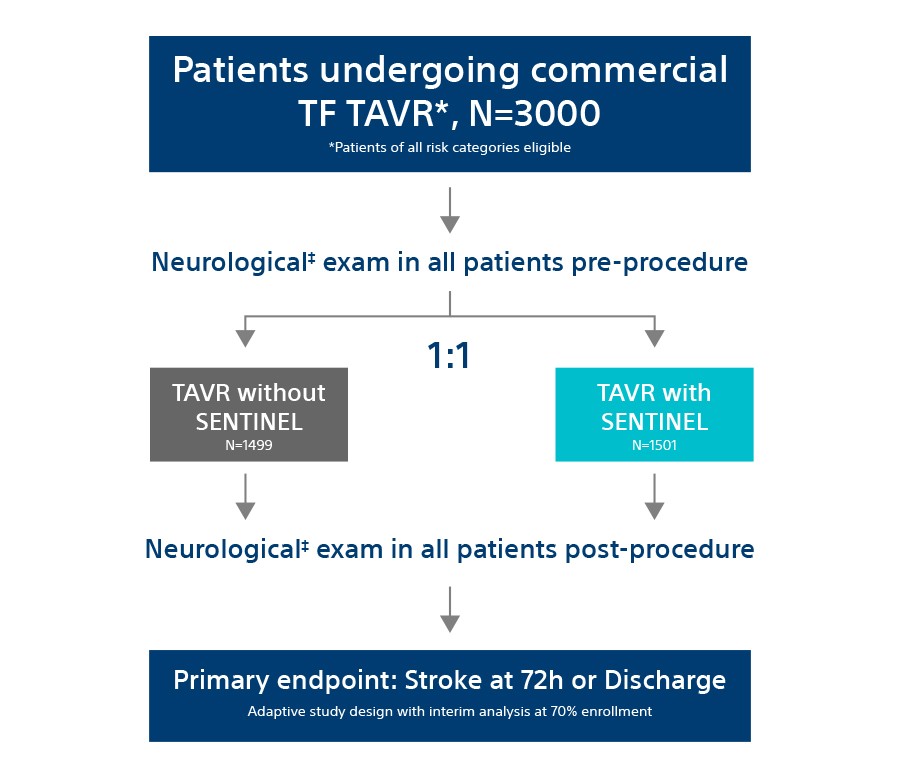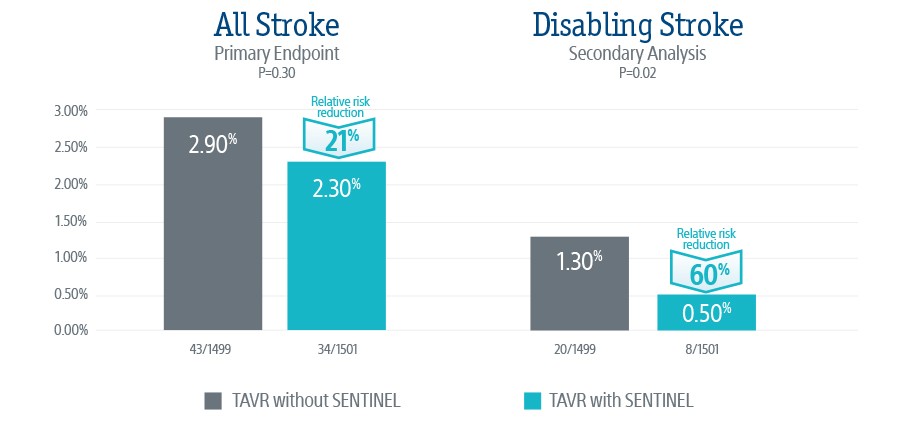Medical Specialties > Structural Heart > SENTINEL™ Cerebral Protection System > PROTECTED TAVR Study
The PROTECTED TAVR Study
Study Objectives
Study Design

PROTECTED TAVR Results
The primary endpoint did not meet statistical significance, but the data demonstrated a numerical trend towards a lower rate of stroke in patients treated with the SENTINEL device, representing a 21% relative risk reduction in all stroke through 72-hours or time of hospital discharge.
A secondary analysis demonstrated a statistically significant 60% relative risk reduction in disabling stroke through 72-hours or time of hospital discharge in patients treated with the SENTINEL device.

Strong safety profile
Stroke persists as an indiscriminate risk
4 minutes per procedure are enough to achieve safe & effective device delivery.
Every patient is a candidate for protection from disabling stroke
Any occurence of stroke is one too many
The PROTECTED TAVR Webinar
60 minutes interactive session moderated by Prof. Thomas Cuisset with TAVI experts Prof. Mohamed Abdel-Wahab, Prof. Lars Søndergaard and Dr. Joanna Wykrzykowska to learn more about :
- Understanding & interpreting PTAVR in a practical manner to reflect clinical practice.
- Addressing the role of CEP in Lifetime Patient Management for TAVI and focus on the periprocedural benefits of SENTINEL™.


















